- Home
- Patrick Robinson
Kilo Class (1998) Page 40
Kilo Class (1998) Read online
Page 40
The two hundred yards beneath the iceberg seemed like an eternity, but all at once the stylus took on a new life and began to draw in a higher line. Columbia edged up off the bottom, and now the line was a dramatic sweep into clear water as the berg slipped away astern. She was through, clambering almost along the bottom, but through.
“Make your speed three knots,” said the Captain. “Planesman, keep her level and plane up to a hundred and fifty feet…we got water above.”
Three hours later, at 0530 on the morning of August 28, Columbia was clear of the heavy ice. There were still intermittent chunks floating around, but it was safe to go to PD in the bright dawn and access the satellite. The signal from SUBLANT was by now routine. The Kilos had been photographed a little over a thousand miles northwest of the Strait—still four days away. Boomer had all the time in the world to position himself for the attack.
He passed his PCS, informing the submarine chiefs in Norfolk that he would swing south off Point Lay and make his way to the narrow radar-swept gap of the Bering Strait, which divides the USA and the former Soviet Union.
There was only a hundred feet of water in here, and there was always ice drifting around, whatever the time of year. Boomer planned to run through the center at PD, then come west toward the Siberian coastline, remaining in the outer limits of American waters, west of St. Lawrence Island. His speed had to be kept low in these shallow waters, and they would need to avoid the rare, but still dangerous, floes that sometimes littered the strait beneath the often choppy windswept surface.
With luck, he would have three or four days to lay his ambush. And it had better be a good one. The Russians had thus far taken inordinate precautions with K-9 and K-10. If they believed the United States might attack again, they would be particularly wary south of the Bering Strait, where American waters run right into Russian waters, and where a US nuclear boat could take out a couple of unsuspecting Kilos with comparative impunity. But K-9 and K-10 were not unsuspecting. They were armed, protected, and ready.
Commander Dunning knew that Columbia might be fired upon. And he knew his crew would have to operate right at the top line of their ability. He thanked God for the one single paragraph contained in his orders that made him truly lethal—the one signed by the Chief of Naval Operations himself, the one cleared by the President of the United States. “In the event of a threatened attack on Columbia, by any foreign power, the Commanding Officer is empowered to use preemptive self-defense.”
Basically this meant he could fire first. Because to fire second might be too late.
13
COLUMBIA RAN QUIETLY THROUGH THE BERING Strait late on the afternoon of August 30 without detection. Boomer headed her toward the northwest headland of Gambell on St. Lawrence Island, and slowed down in the broad waters where the Bering Sea begins to flow into the yawning Siberian Bay of Anadyrskij—a vast expanse of ocean, 200 miles across, north to south, and 150 miles deep to the west.
“If I thought for one moment they were going to make a run for it, straight across the mouth of that bay,” thought Boomer, “I’d nail ’em right here. But I don’t think they’re gonna do that. Because if I were them, I wouldn’t either. I’d creep right around that big bay. I’d stay right inshore, hug the coastline, and stay within twelve miles of Russian soil. That way, I’d be forcing any enemy to break international law if they planned to hit me. I’d also be making it damned difficult for guys like us.”
In shallow water, Boomer continued dived, hidden in the lee of St. Lawrence Island. Everyone was glad of the respite after the fast and dangerous run under the Pole, and the engineers used the time for light maintenance and routine checks. The torpedomen stayed busy, too, for their part would be swift and deadly. One mistake from them and the entire exercise would have been in vain.
Columbia was many thousands of miles from home, and as a Black Ops submarine, very few people knew where they were. The CO wanted no mistakes, no hitches, and no carelessness. They accessed the satellite regularly, and it obligingly provided them with precise daily positions of K-9 and K-10, and the small but powerful Russian armada that guarded them.
In the early evening of September 1, Big Bird photographed the Kilos, moving slowly through the ice floes, still on the surface with the Typhoon and the escorts. They were west of Vrangelya Island, which sits midway between the permanent ice shelf and the endless frozen coastline of Siberia bang on longitude 180 degrees. SUBLANT estimated they would cross latitude 70 degrees around midnight on September 3 and come through the Bering Strait around 1400. Like Boomer they then expected all nine of the ships to then swing hard to starboard into the Bay of Anadyrskij, staying close to the shore all the way.
Boomer pondered his position and decided to head to the southwest and select his spot farther down the coastline. There were simply too many imponderables at the mouth of the bay, such as which way would the Kilos go, and would they stay on the surface? He studied the charts with Mike Krause. They agreed to cross the bay and then continue southwest for 230 miles, just short of the East Siberian headland of Ol’utorsky, where they would set up their patrol.
Boomer was sure this was the best place, about thirty miles northeast of the headland. “If they’re running inshore, we’ll be waiting…if they swing suddenly offshore, the satellites will see them change course, and I can cornerflag to the south…where I’ll still be waiting.”
All through September 2 the Kilos moved carefully forward at eight knots over the icy shoals of the southern Chukchi Sea. Moving within the cover of the escorting destroyers, and behind the crushing weight of the giant icebreaker, they crossed the Arctic Circle and shortly afterward rounded the great jutting square peninsula of northeast Siberia.
K-9 and K-10 entered the Bering Strait at midday on September 3 and changed course to 225 as they followed the Siberian coastline. When Big Bird photographed the stretch of ocean where they should have been at 1900 the pictures arrived in Fort Meade showing just the four escorts, the replenishment ship, and the icebreaker. There was no sign of the three submarines. Both Kilos and the Typhoon must have dived somewhere west of St. Lawrence Island, probably just on the Russian side of the dividing line.
It was 0430 in the morning on America’s East Coast, and the Fort Meade duty officer, Lieutenant John Harrison, looked at the satellite shots with considerable alarm. Losing both K-9 and K-10 at this stage of the game was a three-alarmer. He stood helplessly, holding the telephone, willing Admiral Morris to answer the damn thing. But he never did, not in the middle of the night, and he didn’t now. Lieutenant Harrison handed over control of the busy twenty-four-hours-a-day Intelligence operation, and bolted for the door.
He arrived at the bedside of the slumbering Director of National Security in four minutes, turned on every light, and proceeded to shake the Admiral into life. As ever the boss growled his way toward consciousness with a mixture of indignation and wry good humor.
“This better be important, Lieutenant,” he rasped. “Really important, right?”
“Yessir.”
“Well, speak up, for Christ’s sake. What the hell’s going on?”
“According to the latest satellite pictures, sir, we just lost both K-9 and K-10. They’ve either dived, or made a bolt for it. Either way, sir, it’s not perfect. The escorts are still there, but there’s no sign of any submarines.”
“Jesus Christ! Gimme three minutes. Have the car right outside the door.”
By 0530 Admiral Arnold Morgan had joined Admiral Morris in Fort Meade and they were both staring at the satellite pictures. “These escorts are still making some kind of pattern,” said the NSA. “I suppose it is possible the submarines are still in position…just running under the surface.”
“Yessir. That is possible. But it’s hard to make that assumption, just in case they have made a break for it. I was calculating just before you came. It’s a little more than four thousand miles from the Bering Strait down to Shanghai, where I presume they are headed. If they
refueled the Kilos from that tanker south of the Strait, they could make an eight-knot underwater run, and they’d be there in nineteen days…they’d only have to snorkel a dozen times, and the chances of us catching them there, in that huge expanse of the Pacific that surrounds Japan…well, they are close to zero in my view.”
“Fuck it,” said Arnold Morgan.
As dawn broke over the shimmering warm air of Chesapeake Bay, one solitary US Marine helicopter could be seen out over the Cape Charles lighthouse, clattering its way south, losing height as it swooped down toward the Norfolk Navy yards. It would land seven minutes after a similar chopper had arrived from Washington bearing the CNO. The time was 0715.
“Morning, Arnie,” said Admiral Joe Mulligan and Admiral Dixon in harmony. And the CNO added, “I hear we’re in deepest crap—again.”
“Well, deepest crap is certainly a possibility, though not yet a certainty,” replied Admiral Morgan. “It’s just that we can’t see K-9 and K-10. But that doesn’t mean the fuckers are not still there.”
“Can I see the pictures?”
“Sure. Take a look. If you follow the pattern you can see the escorts are still on duty.”
“Right. Sure looks like it. Where’s Columbia right now?”
“Latest satellite signal says Boomer was heading southwest. He correctly determined an attack at the mouth of the big bay was too complicated, and he is now on his way to a patrol position in 60.15N 171.30E—about thirty miles northeast of Ol’utorsky. It’s quite deep water, fairly well inshore there. Columbia’s team is assessing the Russians will hug the coast, staying inside Russian waters.”
“He does of course need help from us,” said Admiral Dixon. “Just in case he has to cornerflag it to the south if the convoy makes a run offshore. Personally I’m happy he’s way south, gives us more options, and more time. He was planning a fast run to Ol’utorsky, and all being well he’s there right now.”
“When do we get a new satellite fix?” asked the CNO.
“Not for another eighteen hours,” replied Admiral Morgan. “By which time the escorts should be a hundred and sixty miles farther on…either almost across the mouth of Anadyrskij Bay, or deep in it, right down at the western end.”
“I guess that next picture is critical,” said Joe Mulligan.
“Absolutely,” said John Dixon. “I think if they are all down the bay, we should assume the submarines are still with them. If they are on their way down the coast, that makes it marginally less likely. However, if they are holding the escort pattern, that would still look to me as if the Kilos have not strayed far from daddy. Particularly so if they are still making nine knots—nice and comfortable for the brand-new submarines to snorkel.”
Admiral Morgan was thoughtful. “Isn’t it a bitch?” he wondered aloud. “Everything we hate about that fucking little submarine, the sheer difficulty of finding them, is right here to haunt us. As soon as the little bastard dives. If ever there was a goddamned commercial to highlight the danger of that bastard in the Chinese Navy…goddamnit we’re looking at it right here.”
“I guess that’s true,” said Admiral Mulligan. “Meanwhile, we better alert Columbia to the situation. Lay out the options as best we can and advise them to try and keep some kind of a sonar watch not only on the coastline but also out to the east, though I doubt he’ll have much luck in those waters. The place is just too fucking big, right?”
“It is for one submarine, sir,” replied Admiral Dixon. “Unless we can pick ’em up, and provide some hard facts.”
“Okay, gentlemen. I guess that’s it. All we can do is watch and wait.”
By 0400 on September 4, Boomer had sucked the bad news off the satellite. There was little he could do—he was now four hundred miles southwest of the escort’s last known position, and no one yet knew which course they would make on this mammoth journey around the world to China.
The Commanding Officer of Columbia could only listen and wait. And hope.
At 1900 that same day, the all-seeing space camera in Big Bird passed silently overhead twenty thousand miles above the lonely waters at the southeast corner of the Siberian Bay of Anadyrskij. The evening was clear, the quality of the pictures was excellent, and the content encouraging. Admirals George Morris and Arnold Morgan, sipping black coffee in Fort Meade at 0230, made their deductions from the photographs of the Russian ships.
Big Bird had snapped them right off Cape Navarin—the three destroyers, Admiral Chabanenko, Admiral Levchenko and Admiral Kharlamov, and the ASW frigate Nepristupny. They were in a crescent formation inside the fifty-meter-depth contour, against the shoreline. The icebreaker Ural was out in front, and the giant replenishment ship brought up the rear. The key was that the convoy did not appear to have swung to the west around the bay but had proceeded straight across, making some 210 miles in twenty-four hours, which meant they were still making less than nine knots, which in turn meant that K-9 and K-10 were most probably still there. Dived and snorkeling, but there. Otherwise the convoy would have been making fifteen knots or more for home, clear of the ice and the Kilos. There was still no sign of the twenty-one-thousand-ton Typhoon, which meant it had probably left to pursue its own special business.
“You little babies,” said Admiral Morgan. “That speed’s exactly right. Nine knots, two hundred and ten miles exactly. Those cunning pricks must have dived, just in case we were out there waiting for ’em. The other great news is the Typhoon seems to have beat it.”
George Morris packed up the pictures. Arnold Morgan decided to snatch three hours of sleep at his home in nearby Montpelier, and then track on down to Norfolk in the chopper. His chauffeur, Charlie, would wait for him throughout the rest of the night until the Admiral and the package were delivered safely into the Marine helicopter that waited on the Fort Meade pad.
The following day, the three Admirals met again in the Black Ops Cell at SUBLANT. In the opinion of Admiral Dixon, the convoy would stay more or less in place all the way to Petropavlovsk, the big Russian naval base that lies right on the northern Pacific, seven hundred miles southwest of Ol’utorsky toward the end of the Kamchatka Peninsula.
“With that settled,” he said, “we’ll have a reasonable chance. The water off Ol’utorsky comes up from two hundred meters to the beach within twelve miles of the shore. That means Columbia can lie in wait outside of the limit of Russian water and fire from fourteen miles out, straight inshore, straight at the Kilos.”
The three Admirals drafted their “appreciation” of the situation accordingly, stressing that the Kilos were most certainly there but that the Typhoon had almost certainly left. The signal concluded with the following sentence:
“Provided you are able to POSIDENT Kilos, you are free to attack at will.”
Boomer, who now knew the time frame of the satellite pass, ordered Columbia to periscope depth at 0430 on September 5. He sucked down the signal from SUBLANT, and then presented his own appreciation of the situation. He informed the Navy Chiefs he would like to receive one more fix from the satellite this evening, with the Kilos at 60.40N 173.30E, northeast of his patrol spot, sixty miles short of the headland. His signal required no further reply, and Columbia slid swiftly back beneath the calm but chill Pacific waves. To wait.
He took up his position fourteen miles due east of the Siberian shore, a mile outside the two-hundred-meter depth line. Seven miles farther inshore was the fifty-meter line, and he fully expected the Russians to steam down here, just landward of that line, with the two big ships, the three destroyers, and the frigate forming their crescent, presumably around the two submerged Kilos, six miles offshore. So far as he and Mike Krause could tell there was much in their favor. They had deep water to seaward, which would enable them to evade attack if necessary. It would also allow them adequate sonar performance, even though they were looking “uphill,” toward the noisier shoreline.
Boomer accessed the satellite at 2030 and received confirmation from SUBLANT that the convoy was proceeding
as anticipated at the critical nine knots. Big Bird photographed them at 1900, in position 60.40N 173.30E, which put them a little more than sixteen miles to his northeast.
Even as he lowered the mast, the sonar room, deep in the control center of Columbia, picked up the first signals of their approach. The Combat Systems Officer, Lieutenant Commander Jerry Curran, was in attendance, and his sonar chief mentioned that whatever was happening out there sounded a lot like World War III. Lieutenant Commander Curran himself was observing what was a most terrible racket, loud active sonar transmissions, massive cavitation, and many propellers as the Russians came steaming into range.
“Captain…Sonar…could you come in, sir?”
Boomer was there in seconds, and he too was temporarily mystified by the unearthly noise roaring through the water, causing a complete whiteout of the underwater picture. “There’s no pattern to it,” said the sonar chief. “It’s just chaotic, so loud and uneven it’s obscuring all engine lines…just a total mess…we’ve got shaft rates, and blade rates all over the place…can’t make a lick of goddamned sense out of any of it.”

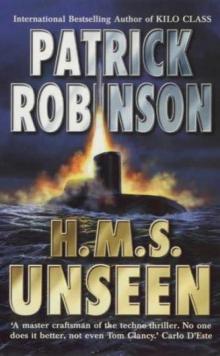 H.M.S. Unseen am-3
H.M.S. Unseen am-3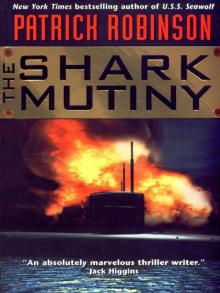 The Shark Mutiny (2001)
The Shark Mutiny (2001)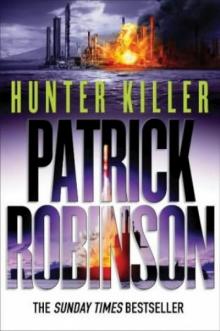 Hunter Killer am-8
Hunter Killer am-8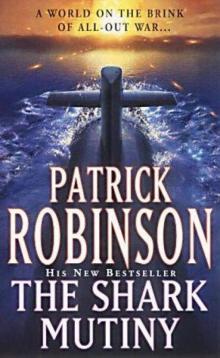 The Shark Mutiny am-5
The Shark Mutiny am-5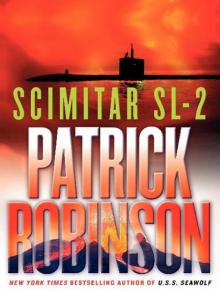 Scimitar SL-2
Scimitar SL-2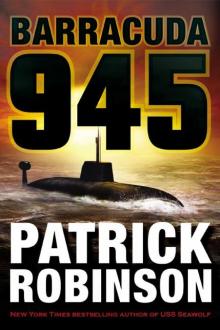 Barracuda 945 am-6
Barracuda 945 am-6 Hunter Killer
Hunter Killer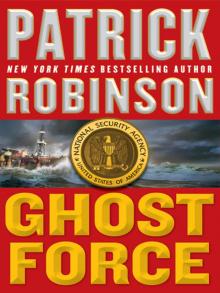 Ghost Force
Ghost Force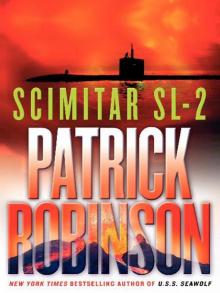 Scimitar SL-2 (2004)
Scimitar SL-2 (2004) Kilo Class am-2
Kilo Class am-2 The Lion of Sabray
The Lion of Sabray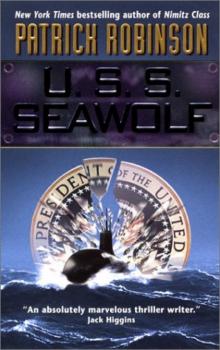 U.S.S. Seawolf am-4
U.S.S. Seawolf am-4 Ghost Force am-9
Ghost Force am-9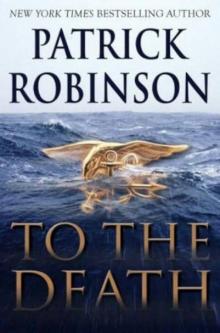 To the Death am-10
To the Death am-10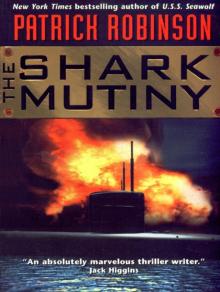 The Shark Mutiny
The Shark Mutiny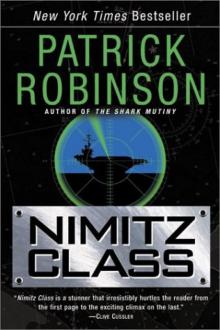 Nimitz Class am-1
Nimitz Class am-1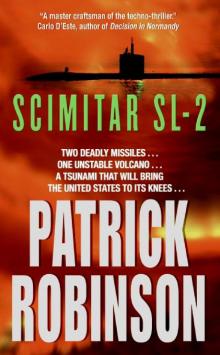 Scimitar SL-2 am-7
Scimitar SL-2 am-7 Barracuda 945
Barracuda 945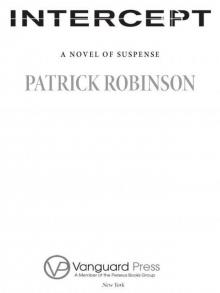 Intercept
Intercept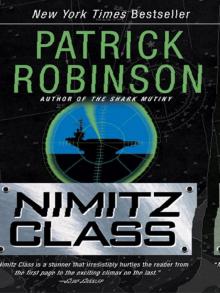 Nimitz Class (1997)
Nimitz Class (1997)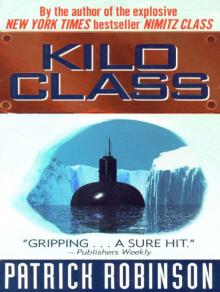 Kilo Class
Kilo Class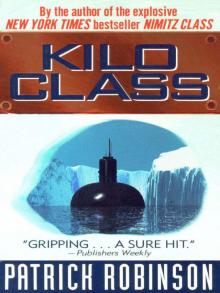 Kilo Class (1998)
Kilo Class (1998) Diamondhead
Diamondhead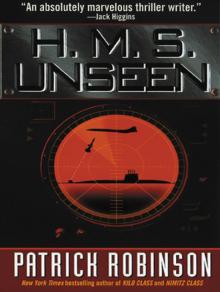 H.M.S. Unseen
H.M.S. Unseen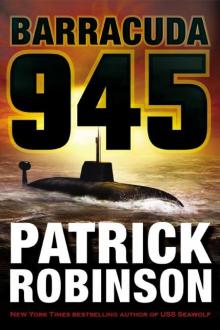 Barracuda 945 (2003)
Barracuda 945 (2003)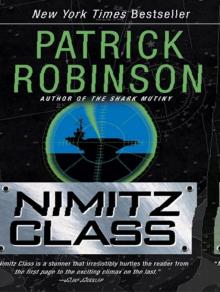 Nimitz Class
Nimitz Class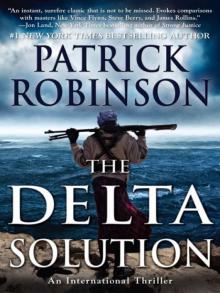 The Delta Solution
The Delta Solution U.S.S. Seawolf
U.S.S. Seawolf